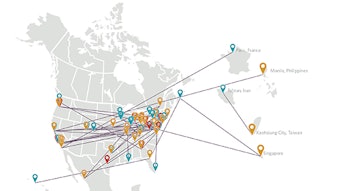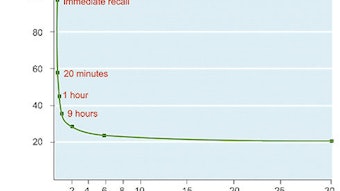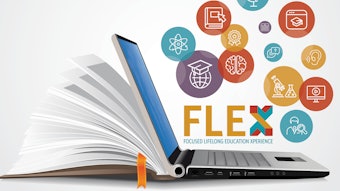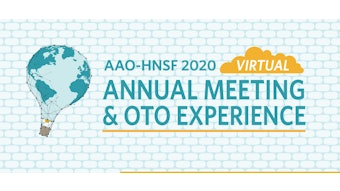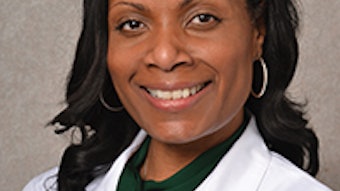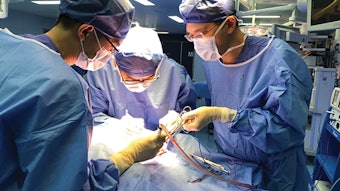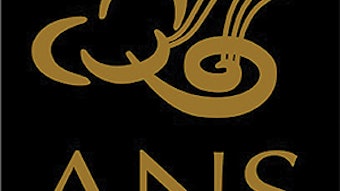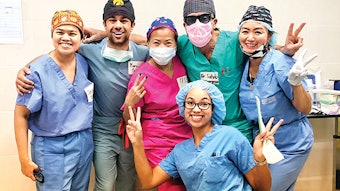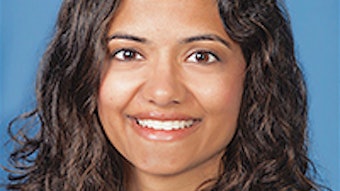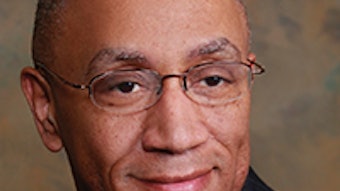Authenticity and Wellness
“Talk less. Smile more.” These are Aaron Burr’s first words of advice to Alexander Hamilton in Lin-Manuel Miranda’s hit musical Hamilton. Debuted in 2015, a filmed version was recently released online at a time when national awareness of identity has been honed laser sharp. Burr’s implication is that success, advantage, or survival may rest upon concealment of one’s real interests, or motives, or identity.
Susan D. McCammon, MFA, MD, Member of the AAO-HNS Physician Wellness Task Force
“Talk less. Smile more.”
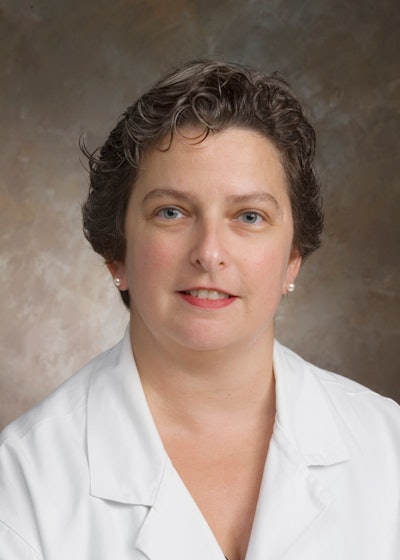 Susan D. McCammon, MFA, MD
Susan D. McCammon, MFA, MDThese are Aaron Burr’s first words of advice to Alexander Hamilton in Lin-Manuel Miranda’s hit musical Hamilton. Debuted in 2015, a filmed version was recently released online at a time when national awareness of identity has been honed laser sharp. Burr’s implication is that success, advantage, or survival may rest upon concealment of one’s real interests, or motives, or identity. Later in the libretto, Hamilton chides Burr for being fickle, or chameleon-like, changing his position to suit his immediate needs and ambitions. The experience of speaking and acting in accordance with your true self is known as authenticity and it is highly valued in many cultures. But what is the relationship between personal authenticity and wellness in the practice of medicine? Is authenticity a worthwhile goal and if it is, what can we do to cultivate it?
Authenticity is defined as the ability to be true to one’s own sense of self, emotions, and values. It has been considered a driving force of human nature by social scientists and a fundamental aspect of individual well-being by philosophers and poets. The inability to be authentic has been shown to be psychologically costly, driving emotional dissonance and exhaustion. In the world of medicine, we work with people who may not share cultural norms or may have different expectations for physician behavior. It can often seem as if we must choose between what is expected—and therefore effective—and what feels authentic. When succeeding at work requires inauthenticity, or suppression of one’s own personality, spirit, or character, we are warned that wellness is at risk and burnout is likely.
On the other hand, the ability to modulate emotional expressions can be useful in building relationships and achieving goals. The more successful a person is at portraying inauthentic states, the more interpersonally competent they are judged to be. Indeed, the ability to express thoughts and feelings that contradict one’s inner mental state is an important developmental milestone. In her landmark Harvard Business Review article, “The Authenticity Paradox,” Herminia Ibarra argues that true authenticity relies on a willingness to stretch and grow with new opportunities. She further argues that self-knowledge need not translate into unfiltered self-expression or total transparency. These values of adaptability inform emotional intelligence and are central to medical education’s goal of “professional identity formation,” a process through which students expand their personal identity to include the attributes and skills of a physician; they learn to “fit” into a professional identity.
Professionalism is a perennial issue in medical education, and this has been attributed to crises of faith about physician integrity and the commitment to self-regulation among medical professionals. The scope and milestones of professionalism, however, range widely—from our most aspirational ideals of honesty and altruism, to more ordinary expectations of grooming and compliance. More than one trainee has observed that a charge of “unprofessional” can cover a multitude of biases, conscious or unconscious.
What is “professionalism?” And what does it cost a person, in authenticity, to achieve it? When I was 12, an adult I respected explained to me that she wasn’t prejudice against Black people, she just didn’t like the music they listened to, or the clothes they wore, or the way they spoke. She pointed out a character in a film who was Black, wearing a button-down shirt, sporting neatly cropped hair, and headed out to a night at the symphony. It was a quiet epiphany, and I thought—she doesn’t dislike Black people as long as they seem White, or as she said, “like a nice young professional.”
I struggle still with the assumptions in that story. Is there something essentially “White” about button-down oxford shirts or the symphony? Why are these items not available to all who like them? On the other hand, it was so very clear to me in her story that she saw jazz music, an Afro, and a dashiki (this was many years ago, remember) as an elected disadvantage, a cultural gauntlet. Was it worse to impose Brooks Brothers on a Black man to barter for social and professional success? Or to imply that race had essential fashion and aesthetic tastes that might predetermine professional options? Does the perception of professionalism hinge on traits not really related to the profession at all?
This was years before I contemplated a career in medicine and years more before I found myself selecting, interviewing, training, remediating, and graduating young otolaryngologists. Yet I find myself on familiar ground here. We train now in unconscious bias. We are alert to the strangulated pipeline for underrepresented minorities in medicine. Graduate medical education actively pursues diversity. Our institutions, practices, and employers seek, to varying degrees, to mirror the cultural makeup of the populations they serve.
From the day of the “White Coat Ceremony,” expectations of medical professionalism and guidance in “professional identity formation” abound. I recently reviewed a list of desired attributes of a medical graduate seeking advanced training. They included “collegial, diligent, flexible, honest, humble, motivated, and responsive,” among others. These seem unassailable and free of essential racial nuance. But I wonder what other values these words code for, and to what extent these desirable values require our applicants to “talk less; smile more.”
In a few short weeks, otolaryngology residency training programs will be initiating an unprecedented pandemic-level interview season necessitated by the risks of COVID-19. We will use Zoom, up our website game, have virtual town halls and online social events, and, as ever, we will seek the holy grail of “fit.”
Pause with me for a moment and reflect on what we mean by “fit.” Fit has been identified as one of the most important factors in the residency recruitment process, but it is rarely defined explicitly. Like some other apparently self-evident things, we “know it when we see it.” Most often, fit translates essentially to similarity. This may be a conscious and reasonable effort for programs to build on a strength or chosen focus. On the other hand, “fit” may be an intuitive impression, or a gut feeling, that results in (unconsciously) recruiting applicants who are like those in the program already, for ease of style or lack of friction. Shappell and Schnapp identify two real risks of using intuitive fit as a criterion for selection: enabling unconscious bias and missing out on diversity or productive disruption. Their recommendations emphasize the importance of being explicit about the expectations and perceptions that result in a good “fit.” What traits contribute to the mission? And how do we determine, really, if applicants have those traits? This is as true for filling a practice position as it is for filling a training program.
Yes, there is a certain health in authenticity, in being at one with yourself and your work, and yourself at work. Parameters of job satisfaction, fulfillment, and meaning are related to feeling authentic at work; feeling inauthentic correlates with boredom, depression, and burnout. Medical professionalism, for everyone, introduces a caesura, or a pause, between who we are “at home” and who we are when we “put on the white coat.” There are expectations of neutral trustworthiness, of an accessible presentation, and a guarded personality.
So, when you meet your new applicants and they smile broadly at you, think for a minute, what are they not saying? What are they against and what are they for? Our challenge is to learn how we as educators and mentors help them learn and grow into new identities without feeling false to old ones.
References
- Gino F, Kouchaki M, Galinsky AD. The Moral Virtue of Authenticity: How Inauthenticity Produces Feelings of Immorality and Impurity. Psychol Sci. 2015;26(7):983-996.
- Ibarra, H. (2015). The Authenticity Paradox, Harvard Business Review, (January-February 2015). 93.52-59 Available online at: https://hbr.org/2015/01/the-authenticity-paradox.
- McCammon, S. D. & Brody, H. (2012). How virtue ethics informs medical professionalism. HEC Forum, 24(4), 257-272. doi:10.1007/s10730-012-9202-0. CI: 12
- Miranda, Lin-Manuel. “Hamilton: An American Musical.” In Hamilton: The Revolution. Edited by Jeremy McCarter. New York: Grand Central Publishing, 2016. https://genius.com/albums/Lin-manuel-miranda/Hamilton-an-american-musical-original-broadway-cast-recording
- Schmader T, Sedikides C. State Authenticity as Fit to Environment: The Implications of Social Identity for Fit, Authenticity, and Self-Segregation. Pers Soc Psychol Rev. 2018;22(3):228-259.
- Shappell E. SB. The F Word: How ‘‘Fit’’ Threatens the Validity of Resident Recruitment. Journal of Graduate Medical Education. 2009:635-636.

